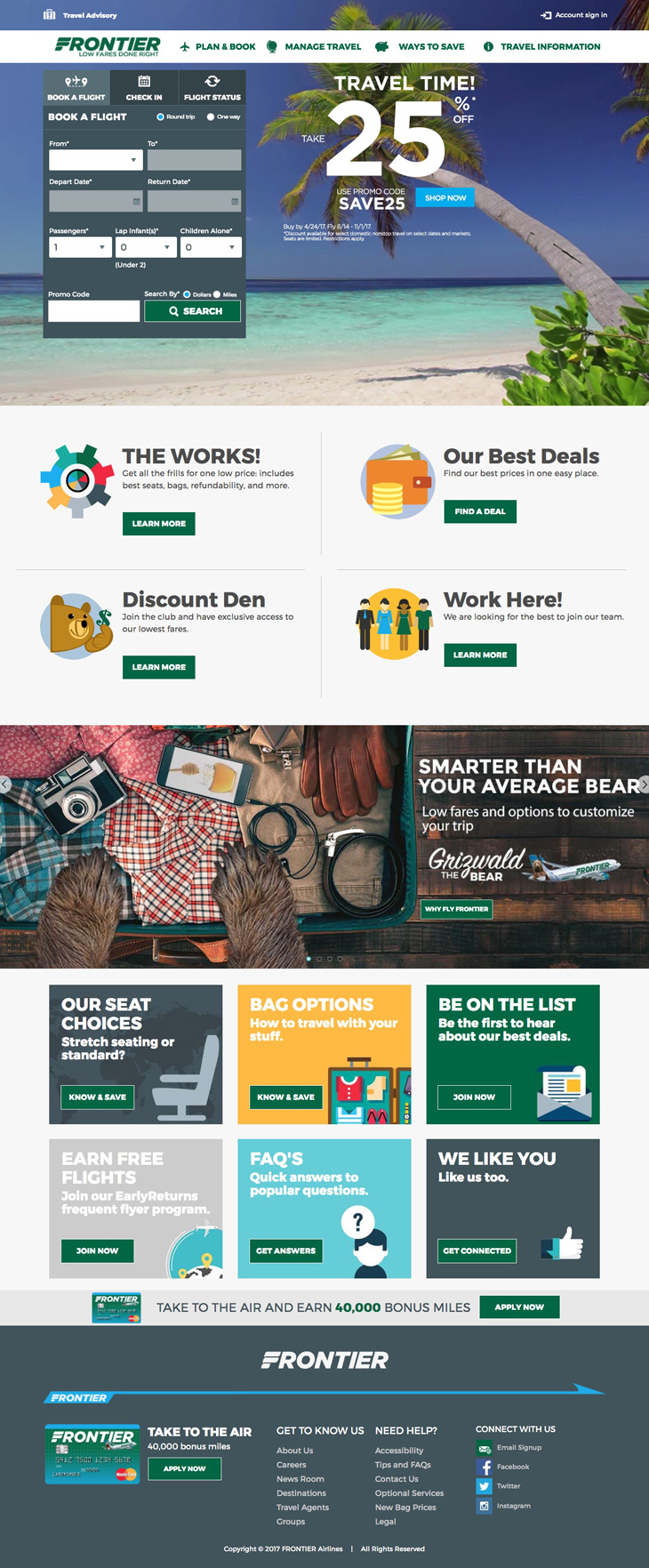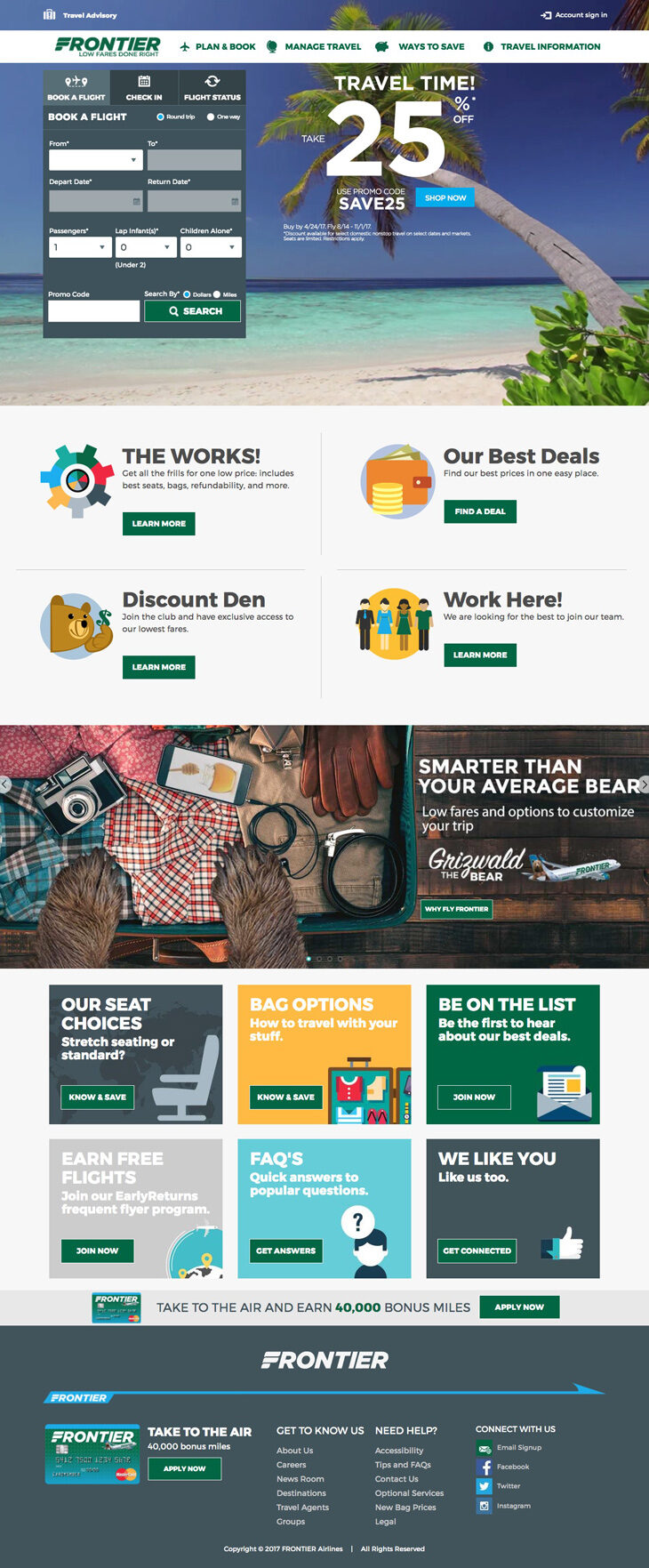1.0Overviewso, basically...
Frontier Airlines wanted a redesign of their high-traffic corporate site’s main pages. I worked with the design team at the agency I was working at, Zenman, to ensure the site’s visuals could efficiently be coded. Then, my development team built the front-end code and a style guide, and worked with Frontier’s back-end developers to support their integration.
Services
Details
- Redesign of major, high-traffic site.
- Built a style guide using KSS.
- Built front-end code and worked with back-end team for integration.




